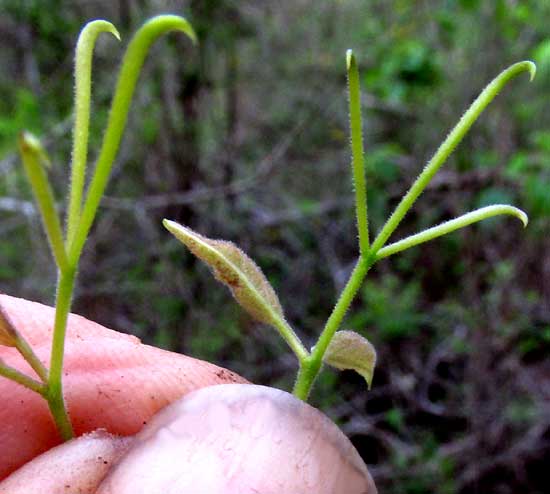Excerpts from Jim Conrad's
NATURALIST Newsletter
issued on February 24, 2020 from Tepakán, Yucatán, MÉXICO
CAT'S-CLAW CREEPER
Here as the dry season begins bringing us some very hot afternoon winds, lots of woody plants are losing their leaves, revealing clusters of hard-coated, capsular fruits dangling on their limbs. A fairly common woody vine, or liana, on the rancho doing exactly that is shown below:
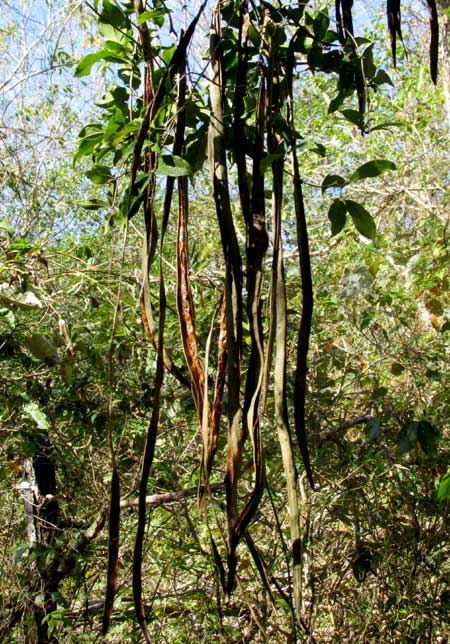
A capsule shown in my hand, for scale, is seen below:
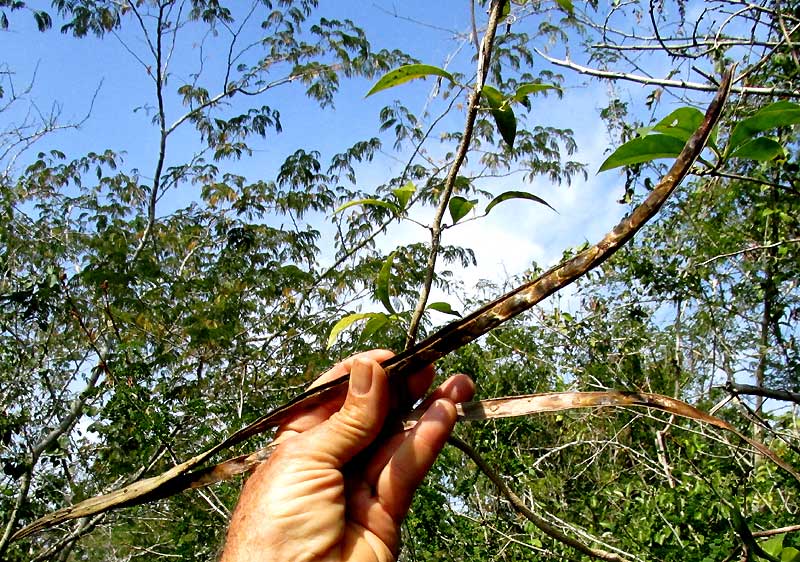
You might think that such capsules are legumes of the Bean Family, but the seeds inside are paired, each pair joined along a common straight side, and on the other side of each seed arises a somewhat transparent, papery wing, as shown below
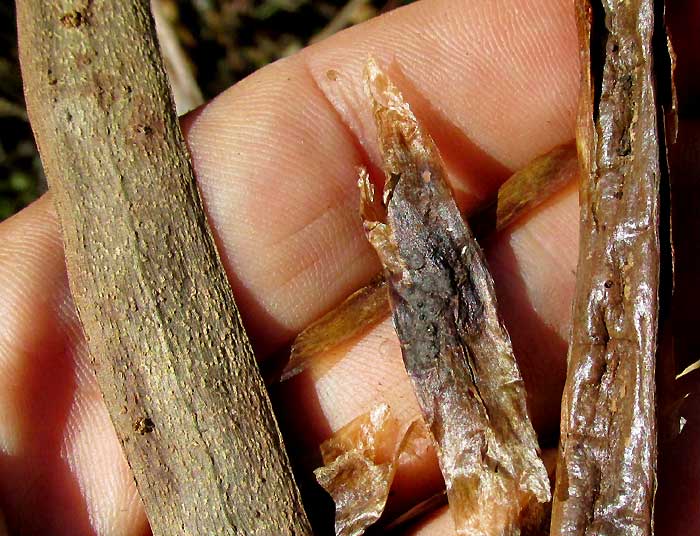
These are classic seeds of the Bignonia Family, the Bignoniaceae. Something notable about the flat surfaces of the capsule's sides is that running down their centers are very low, slender ridges. At this time the rancho's forest has another even more common liana of the Bignonia Family -- an Arrabidaea -- with similar capsules whose faces display similar slender ridges, but those fruits are shorter than these. You may want to compare them. Another difference between the two species is shown below:
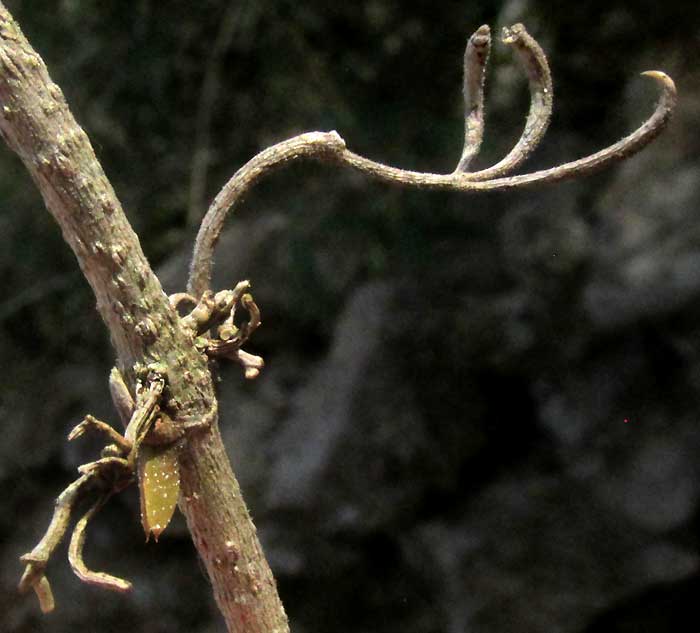
Our short-capsule species bears tendrils that divide into three sharp "claws" -- they're uncinate -- while the Arrabidaea's tendrils are undivided. Not only does our short-capsule species produce uncinate tendrils, but also along its stems' sides, short, slender, forking, adventitious roots occur, similar to those enabling climbing ivy to stick to walls. Such roots are shown below:
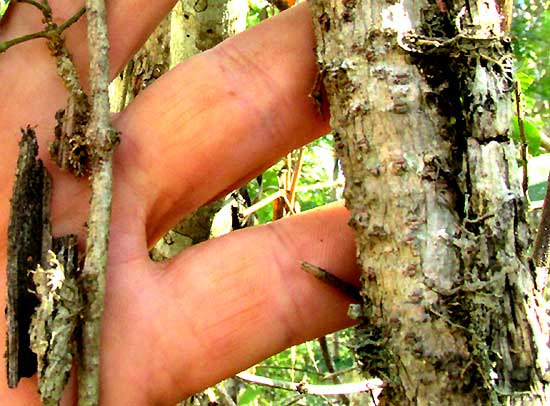
Also note this liana's distinctively thick, gray surface roughened with lenticels, and its roundness in cross section. Many lianas have angled or squared stems. A closer look at the unusual adventitious roots is shown below:
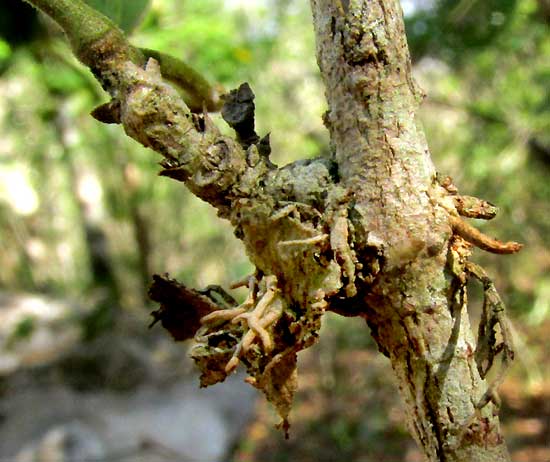
Because so many lianas of the Bignonia Family are found in this area, and the Internet tends to offer pictures of flowers but seldom fruits, often it's hard to identify fruiting lianas. However, this species' very long, slender capsules with low, slender ridges on their faces, the uncinate tendrils, and especially the thick, warty, round-in-cross-section stems with adventitious roots makes it easy to name this as the Cat's-claw Creeper, DOLICHANDRA UNGUIS-CATI, often listed as Macfadyena unguis-cati.
Cat's-claw Creeper is native to most of humid, low-elevation, tropical America, but has become invasive in many tropical and subtropical regions, including the southern US. It's especially aggressive along the banks of watercourses and in the rainforest. It can smother native vegetation, even tall trees, growing 100ft high (30m). Here in the arid Yucatán, however, our plants are good citizens, not even as common as some other native lianas, such as the Arrabidaea.
issued on May 14, 2020 from Tepakán, Yucatán, MÉXICO
CAT'S-CLAW CREEPER FLOWERS
The same vine profiled above now is producing flowers, as seen below:
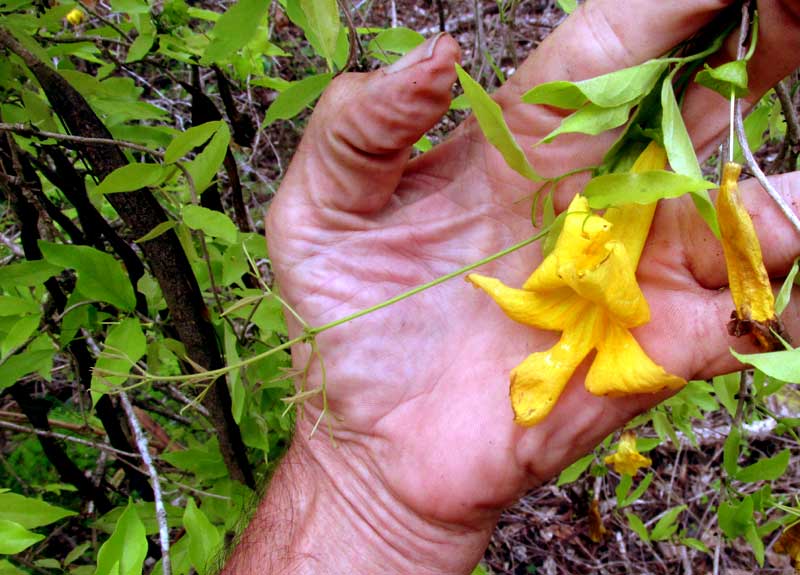
This is a "big bang bloomer," so one day none of our many vines was flowering, but the next day they all seemed to be. Moreover, another species, Melloa quadrivalvis, with very similar yellow flowers, similar forked tendrils, and also a big-boomer, is flowering at the same time. The capsules of Melloa quadrivalvis are not nearly as long and slender as those of this species, but without fruits, it can be hard to distinguish the two species. The best field mark for separating them is that of the calyx shape. On the Melloa quadrivalvis page you can see that the calyx has a sharp lobe, curving outward. That sharp lobe is missing on our Dolichandra unguis-cati flowers, though I read that sometimes it's present, though in-curved, not out. Our flowers' calyxes are somewhat variable. Below, the deeply lobed calyx on the left was typical of flowers of the vine profiled above. The unlobed calyx at the right was typical of certain other vines.
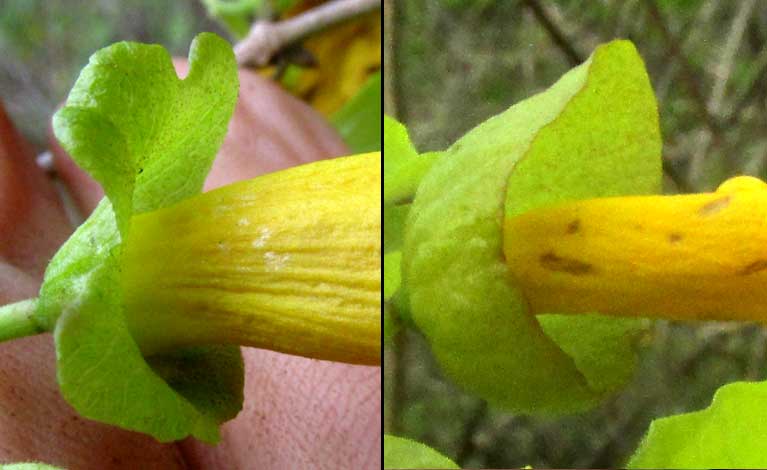
Below is a calyx without its corolla, from the fruiting vine profiled above:
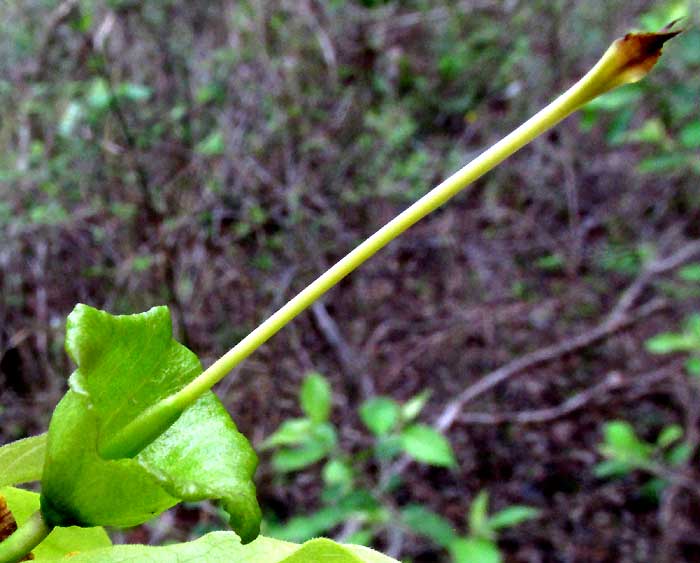
Below are the fruiting vine's young, three-hooked tendrils:
